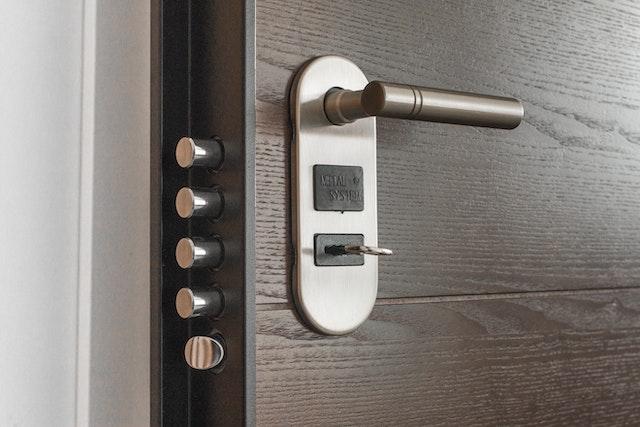10 Essential Office Security Upgrades for the Digital Age
In today's modern office environment, businesses are continually evolving their security measures, recognizing the importance of safeguarding sensitive data and assets. With the advent of technology, traditional security methods like locked file cabinets are being complemented and, in some cases, replaced by innovative solutions such as the smart lock for a file cabinet. Here, we will explore ten crucial office security upgrades that are essential in the digital age, each contributing to the protection of the company’s data.
1: Advanced Locking Solutions
In the realm of office security, the traditional lock and key have given way to more advanced and secure locking solutions. Smart locks for file cabinets are at the forefront of this transformation. These sophisticated systems not only provide top-tier security but also enhance convenience and accessibility. With the elimination of physical keys, the risks associated with lost keys and unauthorized duplication are mitigated. These intelligent locks offer a seamless and secure way to protect valuable documents and assets.
2: Biometric Access Control
The evolution of office security extends to access control systems. Biometric access control is gaining widespread adoption due to its unmatched reliability. By leveraging unique physical attributes such as fingerprints or retinal scans, these systems ensure that only authorized personnel gain access to restricted areas. Biometrics not only enhances security but also simplifies the authentication process, making it both secure and user-friendly.
3: Network Security Enhancements
In today's interconnected world, the digital landscape presents both opportunities and risks. Businesses must invest in robust network security enhancements to safeguard their digital assets. This includes the implementation of advanced firewalls, regular system updates, and the use of encrypted communication channels. By continually strengthening network security protocols, organizations can thwart cyber threats and protect sensitive data.
4: Employee Training
The human element remains a critical aspect of any security system. Employees can inadvertently expose an organization to security risks. Hence, businesses are increasingly investing in cybersecurity training for their staff. Through comprehensive training programs, employees become more vigilant and capable of identifying and mitigating threats such as phishing attempts. Employee education empowers the workforce to become proactive defenders of the organization's digital security.
5: Surveillance Systems
Surveillance technology has evolved significantly, transforming the way businesses monitor their premises. High-definition cameras, motion sensors, and remote monitoring capabilities now provide comprehensive security coverage. These modern surveillance systems not only serve as deterrents to potential intruders but also serve as invaluable tools for investigating incidents and maintaining a secure environment.
6: Access Control Systems
Controlling access to various parts of an office is paramount for security. Modern access control systems have moved beyond traditional keys. They employ advanced technologies such as key cards, biometrics, or PIN codes to grant access. These systems also maintain an audit trail, allowing organizations to track entries and exits. The use of these modern access control solutions helps prevent unauthorized access to sensitive areas, enhancing overall security.
7: Data Encryption Practices
Data encryption plays a fundamental role in digital security. It involves encoding sensitive information to ensure that only authorized parties can decipher it. Robust data encryption practices offer an additional layer of defense, guaranteeing that even if data is intercepted it remains encrypted and unreadable to malicious actors - an essential practice for maintaining both confidentiality and integrity in sensitive information.
8: Security Auditing and Monitoring
Proactive security measures include regular security audits and real-time monitoring. Automated tools can scan networks for vulnerabilities, while manual audits assess the effectiveness of existing security measures. Monitoring tools provide instant alerts for potential threats, enabling swift responses to mitigate risks. These auditing and monitoring practices help organizations stay ahead of security challenges.
9: Physical Security Measures
Physical security measures remain relevant in the digital age. Securing storage areas, restricting access to specific zones, and implementing visitor management systems are crucial components of physical security. These measures ensure that not only digital assets but also physical assets and data are protected from unauthorized access and potential threats.
10: Compliance and Regulations
Compliance with industry-specific regulations and standards is a fundamental requirement for businesses. Adhering to these standards not only ensures that organizations follow best practices but also maintains adequate security measures. Compliance builds trust with clients and stakeholders by demonstrating a commitment to safeguarding sensitive data and upholding industry standards. It enhances security while bolstering the organization's reputation.
Finally
Office security in the digital age is a multifaceted endeavor. Smart locks for file cabinets represent just one facet of a comprehensive strategy for enhancing data security in the modern office. By continually adapting and enhancing their security measures, businesses can minimize risks, boost confidence among clients and stakeholders, and ensure sustained growth in an increasingly interconnected world.

